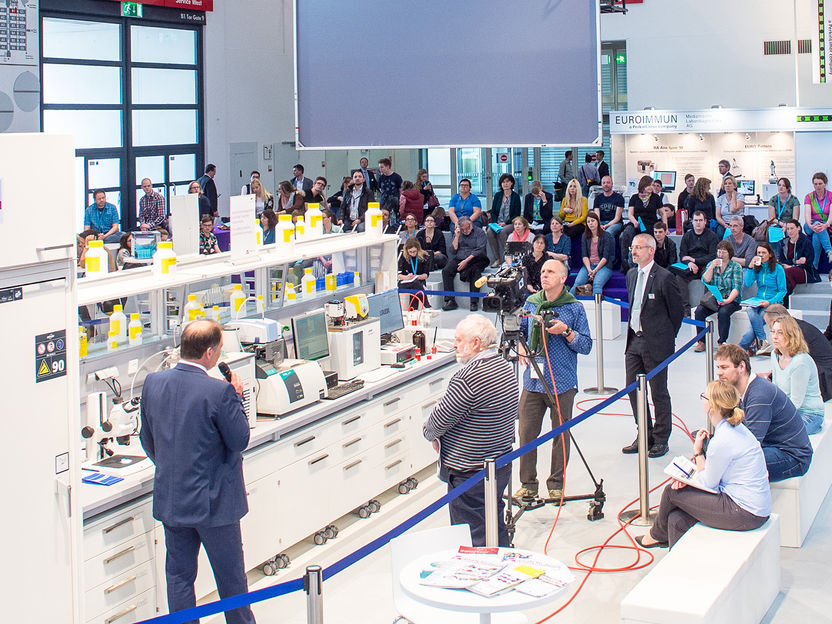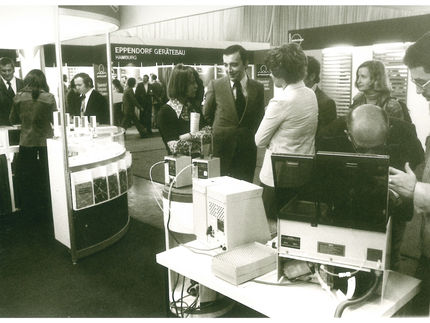analytica 2020: New instruments for battery research
Modern analysis indispensable for battery research
Researchers all over the world are working on powerful batteries for the energy revolution. Modern analysis technology is indispensable for this. analytica therefore focuses on new devices and methods for battery research. The world’s leading trade fair for laboratory technology, analysis and biotechnology with accompanying analytica conference will take place from March 31 to April 03, 2020, on the fairgrounds of Messe München.

Messe München GmbH
Lithium-ion batteries are used in electric cars, smartphones and many other mobile devices. Nevertheless, they have various disadvantages—from questionable ingredients such as cobalt to flammability and self-discharge. Researchers around the world are therefore working to optimize lithium-ion batteries, or to develop alternatives such as sodium ion batteries. For this, they need the latest analytical methods.
“Many equipment manufacturers have recognized the urgency in battery and power research and specified their systems accordingly,” explains Susanne Grödl, Exhibition Director analytica at Messe München. analytica presents the entire gamut of analysis systems that contribute to further development of storage technology for electric energy. The recently published “Trend Report Battery and E-Mobility” also provides information on highlights from battery research.
Technologies for better batteries
Anyone who wants to develop better batteries must understand the processes inside the cell. For example, the ageing of the electrolyte, that conductive medium between the two electrodes, is crucial for the safety, service life and performance of a battery. In particular, spectroscopic methods and the coupling of chromatography and mass spectrometry are being used by researchers to investigate which undesirable substances are produced during electrolyte ageing. Based on this knowledge, more stable electrolytes and new electrolyte additives are developed.
The electrodes likewise change over time. In lithium-ion batteries, for example, branch-like lithium protrusions, so-called dendrites, can form on the negative electrode. They are considered to be a causative factor of internal short circuits and battery fires. Microscopy methods—from light microscopy to extremely high-resolution atomic force microscopy—make dendrites visible and provide information for the development of safe batteries. Surface-sensitive techniques such as ATR-FTIR spectroscopy and Raman imaging also identify alterations and deposits on the electrodes.
In addition, battery research needs devices for determination of physical parameters. Surface measuring instruments, for example, support electrode design, because large electrode surfaces increase battery capacity and allow rapid charging. Calorimeters, in turn, can be used to investigate the heat emission of batteries, which is related to self-discharge.
Instruments for battery research at analytica
At analytica, interested parties can find out which analysis method is best suited to a specific problem. Instruments for battery research are offered by Bruker, Metrohm, Thermo Fisher Scientific, Shimadzu and many other exhibitors.
“Battery research is innovative cutting-edge research that requires cutting-edge analysis systems,” emphasizes analytica’s Exhibition Director Grödl. In order to ensure that new instruments meet the high requirements, in the development of many instruments manufacturers and users collaborate closely. Grödl emphasizes: “Analytica sees itself as a driving force behind such cooperations. We are therefore delighted that all leading suppliers of analysis systems will be presenting their innovations at analytica.”
Other news from the department business & finance
Most read news
More news from our other portals
See the theme worlds for related content
analytica preview 2024
Here, innovative exhibitors present their trade fair innovations, premieres and product innovations for analytica 2024.

analytica preview 2024
Here, innovative exhibitors present their trade fair innovations, premieres and product innovations for analytica 2024.























































